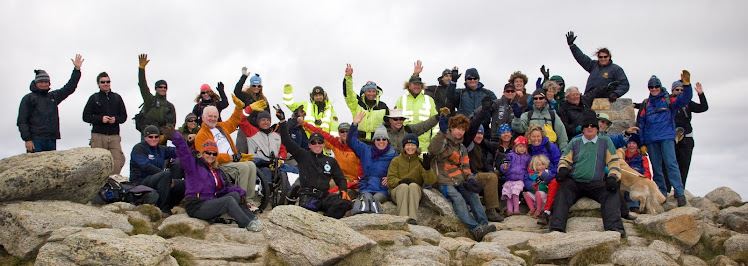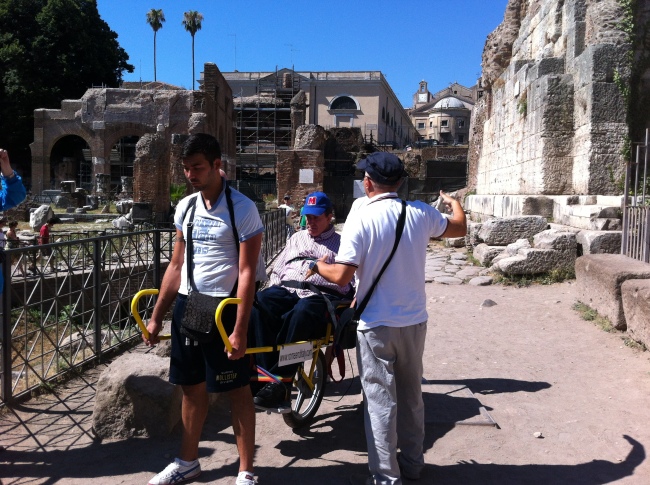Prof Simon Darcy from the Cosmopolitan Civil Societies Research Centre at the University of Technology Sydney, has been appointed to the scientific committee for the First World Summit On Destinations for All. Prof Darcy is the co-author/editor of the first two books on accessible tourism that explores how the intersection of disability and tourism requires complex processes to provide an equality of experience for people with disability at tourism destinations. He will coordinate a stream at the world summit on developing inclusive approaches to outdoor recreation activities. Providing inclusive outdoor experiences involves the mixed economy of disability organisations, equipment suppliers, commercial outdoor and tourism operators, together with destination and National parks managers working together to create an equality of experience for the group. One example of equipment that has provided opportunities for a variety of outdoor experiences for people with disabilities is the Joëlette. As Photo 1 shows, Simon used this equipment recently to gain access to the archaeological sites in Rome that otherwise would have been inaccessible to wheelchair users.
Photo 1: Simon Darcy using the Joëlette in Rome
References
Buhalis, D., & Darcy, S. (Eds.). (2011). Accessible tourism: Concepts and issues. Bristol, UK: Channel View Publications.
Buhalis, D., Darcy, S., & Ambrose, I. (Eds.). (2012). Best practice in accessible tourism: Inclusion, disability, ageing population and tourism. Bristol, UK: Channel View Publications.
Buhalis, D., Darcy, S., & Ambrose, I. (Eds.). (2012). Best practice in accessible tourism: Inclusion, disability, ageing population and tourism. Bristol, UK: Channel View Publications.
A press release about the World Summit now provided for further information.
===========
The First World Summit Destination for All will be held in Montreal in October 2014.
Montreal, October 19, 2013. The first World Summit Destination for All aims to establish an international strategy to develop inclusive tourism. Mr. André Vallerand and Mr. Ivor Ambrose are the co-chairs of this prestigious, one-of-a-kind event.
“The development of universal accessibility of infrastructures, tourism services, and transport services cannot be done without a global partnership: we must share our knowledge and best practices for dissemination, and convince our partners that sustainable development must be inclusive.”
-André Vallerand, Special Advisor to the Secretary General of the World Tourism Organization (UNWTO), President of the World Centre of Excellence for Destinations, and co-chair of the Summit.
“Tourism for all is not only a question of human rights, but it is also a target market that investors should consider. Destinations that can offer accessible experiences for all their visitors will see a favourable return on their investments, as demographic change brings greater numbers of older travellers who tend to stay longer and travel throughout the year.”
-Ivor Ambrose, Managing Director of the European Network for Accessible Tourism (ENAT) and co-chair of the Summit.
“We need not only international standards, but also an independent evaluation mechanism or a certification in order to properly inform the clientele of accessible conditions in an establishment and/or a destination.”
- André Leclerc, CEO of Keroul and instigator of the World Summit Destinations for All.
Several prestigious international organizations have joined this event, including the World Tourism Organization (UNWTO), the International Social Tourism Organisation (IST) , the European Network for Accessible Tourism (ENAT), the World Centre of Excellence for Destinations (CED), the ONCE Foundation in Spain, and the Tourisme & Handicaps Association in France .
This Summit comes at a crucial turning point in the international economy for the development of inclusive tourism, as discerned by these facts:
□ In October 2011, the European Parliament adopted a Resolution on mobility and inclusion of people with disabilities and the European Disability Strategy 2010 - 2020 in favour of people with disabilities;
□ The international standard ISO 21542 on the accessibility of the built environment for people with disabilities was launched in December 2011;
□ In 2013, the International Civil Aviation Organization (ICAO-ICAO) has published its Manual on Access to Air Transport by Persons with Disabilities;
□ On September 11, 2013, the World Tourism Organization released its revised Recommendations on Accessible Tourism for All;
□ On September 25, 2013, France launched a call for nominations to territories wishing to take advantage of the label "Destination for all" ;
□ The French Republic law for the integration of disabled people established January 1, 2015 as the deadline for the accessibility of facilities open to the public;
□ At the Conference of States Parties to the Convention on the Rights of Persons with Disabilities in July 2013, the co-chair of the UN Committee on Sustainable Development Goals made a clear link between sustainable development and the inclusion of persons with disabilities;
□ The United Nations has initiated discussions with the international community to determine the goals the UN will follow after the end of the Millennium Development Goals in 2015.
Conditions are therefore timely and conducive for establishing a global partnership to develop Tourism for All.
We invite all destination managers, tourism service providers, municipalities, researchers and the entire international community involved in tourism development to reserve the dates of October 19 to 22, 2014 when the World Summit will take place in Montreal, Canada.
The Steering Committee invites the individuals or organizations, practitioners and scientists, wishing to share their experience and point of view, to participate in the Summit.
A description of the themes and issues that will be addressed during the event as well as all the details for submitting a paper or a video for the Summit can be found on our Web site.
The World Summit Destination for All will be held at the Palais des congrès de Montreal, from the 19th to 22nd of October 2014.
For more information, please visit our website www.destinationspourtous2014.com.
Contact for Editors: Michel Trudel, Keroul , +1 514-252-3104, mtrudel@keroul.qc.ca
Summit Secretariat c/o JPdL International
1555 Peel St., Suite 500, Montréal (Québec) Canada H3A 3L8
T + 1 514-9898, ext. 222 / F +1 514 287-1248 / destinations2014@lpdl.com / www.destinationspourtous2014.com














